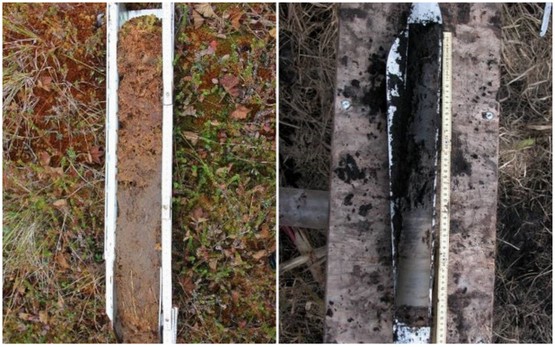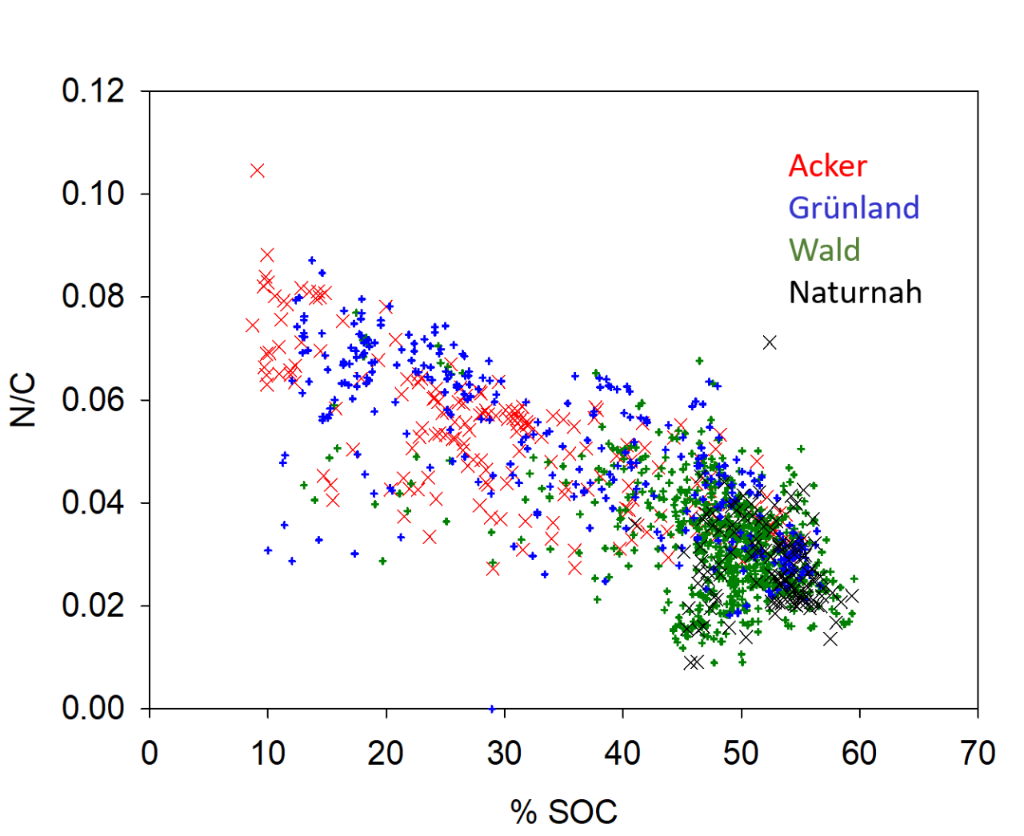After drainage, the intact peat undergoes rapid microbial decomposition. Apart from the emission of gaseous products (especially CO2), the remaining peat is also transformed. Here, the chemical composition of the peat is a good indicator of the extent of its decomposition. Drainage causes soil pore volume to decrease significantly, and concentrations of nutrients (especially nitrogen) as well as bulk density increase. The nutrients released by peat mineralisation cannot all be absorbed by the plants, and end up in the atmosphere, surface waters and groundwater.
Our studies have shown that the extent of peat degradation systematically increases along with land-use intensity (arable land > grassland > forest > semi-natural). In addition to standard measurements of peat characteristics, radioactive carbon content was used to estimate previous peat loss at sites.







